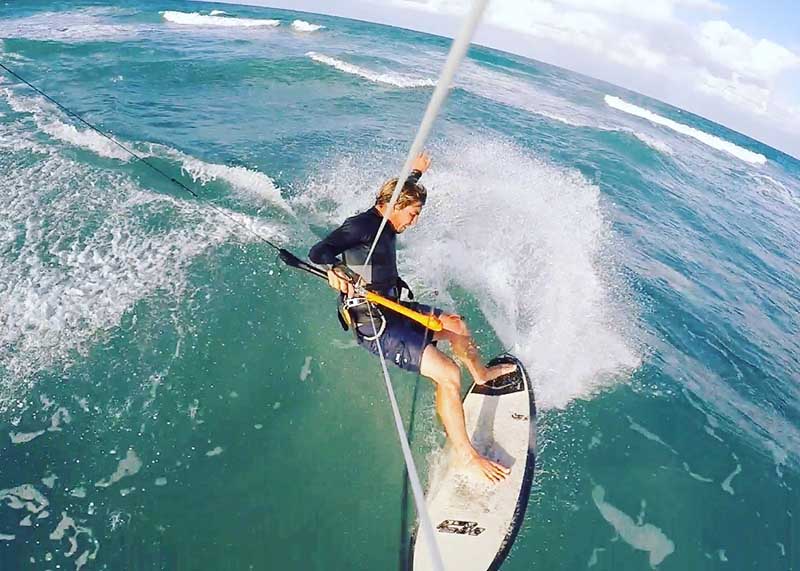
Kiteboarding started to grow as an extreme water sport in the early 2000s and in recent years has gained immense popularity with people even outside the watersports community. In the early years of kiteboarding, equipment was crude and safety systems were slim to none. The sport started to become infamous with the help of online videos showing people flying into buildings or getting lofted uncontrollably into the air due to poor safety designs and inadequate instruction in the sport. Since then kiteboarding has come a very long way in terms of equipment design, safety, and professional instruction. However, despite the relatively safe track record of the sport in the past five to ten years there are still misconceptions that exist.
One of the most common questions that come from people inquiring about learning to kiteboard is “How strong do you have to be?” This is an understandable concern because from the beach it appears as if riders are solely gripping the bar in front of them and being pulled by the kite. If this were the case, it would definitely require immense upper body and grip strength to hold onto the bar. Actually, the grip on the bar is very light. As a rider gets going they can even let go with one hand and control the bar with a light grip from the other. This is possible because almost all of the pull from the kite is coming through a harness that the rider is wearing around their hips or waist. The bar is only there to steer and sheet the kite in and out adding a little more or less power through the harness. The pressure is so little on the bar that virtually anyone could hold it without a problem.

Strength is necessary in kiteboarding, but not a lot, and in a much different way. For someone to be successful in the sport, they need to have satisfactory core and leg strength. The only reason for this is to keep their core and legs engaged as the kite pulls them up onto the board. A good way to think about this is to imagine someone is sitting in the sand with legs relatively straight. If someone were to give them a hand to get up they should have enough strength to keep their core tight and dig their heels down into the sand as they get pulled off the ground.
The other misconception in kiteboarding is about safety. A lot of people are concerned that they will get lifted or dragged involuntarily. A small drag through the water is possible and probable when learning the sport but it is enormously easy to let go of any power in an instant. There are three stages to this and they should be practiced with a professional instructor. The first is to just let go of the bar. This sheets out the trailing edge of the kite and “dumps” any wind it is holding. If that does not work and there is still too much power, one can pull their primary release. This is usually a red or orange “knob” directly in front of the kiter that easily slides out and releases the “chicken loop”. Once the primarily release is pulled the kite “flags out” and is only attached to the rider by one line and their leash versus four lines. There should be absolutely no power left in the kite at this point. If for some reason there is still power in the kite, the rider can simply pull their “leash release” and completely detach the kite and lines. These three stages can be done easily in less than two seconds after a few practice attempts and once our students understand and practice their releases they become very confident that they can handle discarding any power if they need to.
Misconceptions still exist however; equipment design and safety have come a very long way since the start of kiteboarding. Almost anyone, with proper instruction and basic core strength, can try and enjoy this immensely rewarding sport.
FORECAST BY: Capt. Bill Swezey
New Wave Kiteboarding
Email: Jeremy@newwavekiteboarding.com
Website: NewWaveKiteboarding.com
Find us at Sailfish Marina in Stuart, FL
(561) 633-9362




